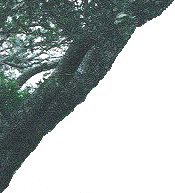Cheap fulvicin 250mg with amexStudies have demonstrated that international spinal malalignment is a powerful predictor of incapacity in sufferers with grownup spinal deformity fungal lung infection buy fulvicin 250 mg with amex. Research on spinopelvic steadiness revealed that a normal fungus gnats mushrooms 250 mg fulvicin visa, harmonious relationship exists between the pelvis and the backbone toenail fungus definition fulvicin 250mg with amex. Spinopelvic steadiness ought to be differentiated from sagittal steadiness; the former describes the global overall sagittal aircraft relationship between the spine and the pelvis antifungal ointment for jock itch discount fulvicin generic, whereas the latter describes how the person parts of the sagittal aircraft and the regional curves affect and relate to each other. The objectives of performing an osteotomy in these circumstances are to restore sagittal and spinopelvic stability, such that the affected person can stand erect with out the necessity to flex the hips or knees, and to reduce the ache and useful disability related to spinal deformity. Historically, the Smith-Petersen osteotomy was first described in 1945 to treat postrheumatoid flexion deformity. This is a posterior column wedge osteotomy that hinges on the posterior longitudinal ligament and causes a gap of the anterior column, and is a true extension osteotomy with shortening of the posterior column and lengthening of the anterior column. Smith-Petersen et al recommended a single-stage posterior wedge resection of the midlumbar backbone in a chevron arrangement with managed fracturing of the ossified anterior longitudinal ligament. Modifications of this system such because the Ponte procedure and polysegmental osteotomy have been described. Thomasen12 first described in 1985 the three-column posterior osteotomy for the management of mounted sagittal plane deformities in patients with ankylosing spondylitis. Vertebrectomy was first described by MacLennan for the therapy of extreme scoliotic deformities through a posterior-only strategy adopted by postoperative casting. Patients with mild symptoms can usually be managed nonoperatively with bodily remedy, anti-inflammatory drugs, and way of life modifications. For those sufferers with debilitating symptoms as a outcome of vital sagittal imbalance, surgical management usually includes spinal instrumentation and fusion in combination with an osteotomy or multiple osteotomies to achieve desired correction in the spinal alignment. The decision of which osteotomy to use depends on the magnitude and character of the deformity, as properly as the coaching and experience of the surgeon. The key issue for determining the necessity of an osteotomy is the presence of a partially or completely fixed deformity based on the physical examination and radiographic analysis. In patients with substantial deformities, the initial workup at all times consists of the flexion/extension/lateral bending radiographs of the backbone to decide if the deformity is flexible or rigid. For sufferers with partially or fully inflexible deformity, osteotomies may be essential for spinal realignment. Note how the front of the vertebra is twice the height of the again, inflicting lordosis. It permits a three-column correction of the spine by way of a wholly posterior approach; extra importantly, it does so without lengthening the spinal column and avoids stretching the neural parts. A portion of the spine is substantially hyperkyphotic, but the patient is able to maintain stability by hyperextending segments above and below. Other than the presence or kind of sagittal imbalance, a number of elements have to be evaluated for patients with fixed deformity to choose the optimum osteotomy method. These embody the variety of osteotomies needed, the proposed fusion levels, the variety of fixation factors needed/available above and beneath the osteotomy web site, and the placement of the osteotomy. In addition, the presence of prior surgeries might have a huge effect on what osteotomy could be performed. The quantity of correction needed could be estimated from the preoperative radiographic measurements indicating the degree of curvature in the sagittal aircraft. They are best performed at L2 or L3, the place an sufficient variety of fixation points may be located above and below the osteotomy. This process is often used for cases in which the correction must be carried out at an angle of ~ 30 levels, which is performed primarily on the lumbar degree. The involvement of the hip joints in a considerable flexion deformity accentuates the sagittal imbalance of the backbone. Mobilization of the hips and correction of the fixed deformity by hip arthroplasty ought to be carried out earlier than contemplating spinal osteotomy in patients with hip contractures. Use of the Gardner-Wells traction is preferable to maintain the face and eyes free of stress throughout these prolonged procedures. The arms are maintained on well-padded arm boards in a 90-degree to 90-degree place, with consideration 658 V Lumbar and Lumbosacral Spine. For main spinal reconstructive procedures the intraoperative administration of antifibrinolytics (aprotinin, tranexamic acid, e-aminocaproic acid) has been gaining growing recognition. Once the patient is positioned, prepped, and draped, normal midline exposure is performed, exposing all the levels to be integrated in the fusion assemble. Dissection is carried down to the extent of the thoracodorsal fascia, and self-retaining retractors are positioned.
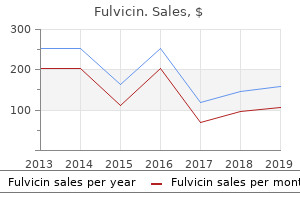
Buy cheap fulvicin onlineFor cases involving extradural pathology fungus gnats larvae picture buy fulvicin with american express, the lesions can be resected with a combination of bipolar electrocautery fungus growing in mulch discount fulvicin 250mg mastercard, pituitary forceps antifungal agents quiz purchase fulvicin line, and microsurgical dissectors fungus gnats vegetable garden generic fulvicin 250 mg without prescription. Bipolar electrocautery and Gelfoam (Pharmacia & Upjohn Company, division of Pfizer Inc. For cases involving intradural pathology, the dura is opened at every exposure site and the pathology is resected throughout its rostral-caudal borders. Once hemostasis is obtained, the wound is copiously irrigated with an antibiotic solution. The retractors are then removed to permit the paraspinal muscle tissue to reapproximate in normal anatomic alignment. The subcutaneous layer is reapproximated with 3-0 Vicryl sutures, and the pores and skin is closed using subcutaneous 4-0 sutures adopted by Dermabond (Ethicon, Inc. A biomechanical evaluation of graded posterior component removing for therapy of lumbar stenosis: comparability of a minimally invasive method with two normal laminectomy methods. Biomechanical effects of a unilateral method to minimally invasive lumbar decompression. J Spinal Cord Med 2012;35:175�177 de Jonge T, Slullitel H, Dubousset J, Miladi L, Wicart P, Ill�s T. Late-onset spinal deformities in youngsters treated by laminectomy and radiation therapy for malignant tumours. Spinal Cord 2000;38:92�96 Potential Complications and Precautions � � � � A wrong-level place to begin can be averted by acceptable preoperative imaging and use of fluoroscopy for localization prior to skin incision. Nerve root and spinal cord damage can be avoided by proper drilling method and intraoperative neural monitoring. Conclusion the process described in this chapter is a minimal entry technique utilizing muscle-splitting tubular retractors that might be employed safely and effectively to treat various multilevel dorsally compressive pathologies of the thoracic backbone. This method might restrict approach-related morbidity and long-term spinal instability when compared with the normal multisegment decompression using open laminectomies. Performing the hemilaminotomies on this trend helps to protect the native musculoskeletal anatomy. Weinstein Spondylolysis and spondylolisthesis are frequent causes of low back ache among children. The time period spondylolysis refers to a bony defect of the pars interarticularis without translation of adjacent vertebral bodies, whereas the term spondylolisthesis describes the anterior translation of adjoining vertebral bodies upon one another. Both the prefix "spondylo-" and the suffix "-olithesis" have Greek etymology and translate to "spine" and "to slide," respectively. In the pediatric affected person, these conditions occur mostly on the lumbosacral junction, involving the L5 pars adopted by L4. Spondylolysis and spondylolisthesis embody a spectrum of disease throughout which clinical presentation and treatment varies tremendously. In most sufferers, symptoms resolve with nonoperative remedies, but in refractory cases and high-grade spondylolisthesis surgical intervention is commonly needed. This chapter discusses the classification, epidemiology, medical presentation, diagnostic evaluation, and treatment of spondylolysis and spondylolisthesis in youngsters. Classification Although spondylolysis is outlined as a defect in the pars interarticularis, it encompasses a spectrum of situations. The term isthmic spondylolysis is utilized to complete fractures with sclerotic margins. Incomplete disruption of the pars or adjacent components carries the term stress reaction. Spondylolisthesis refers to the anterior translation of the vertebral body upon the extent beneath. The quantity or diploma spondylolisthesis was graded by Meyerding in 1941, and divided into 5 classes primarily based on the share of anterior displacement of one vertebral physique on one other. Like many pathologies of the backbone, each spondylolysis and spondylolisthesis have a quantity of etiologies. In what has turn into the commonest classification system, Wiltse and Newman characterised spondylolisthesis based on presumed etiology into 5 major groups: congenital, isthmic, degenerative, traumatic, and pathological. Congenital or dysplastic spondylolisthesis (type I) describes a congenital bony abnormality of the posterior vertebral parts at the lumbosacral junction. High-impact actions in young athletes similar to gymnastics, dancing, soccer, and wrestling have been related to elevated risk, as have motorcar accidents.
| Comparative prices of Fulvicin | | # | Retailer | Average price | | 1 | Dick's Sporting Goods | 563 | | 2 | ShopRite | 797 | | 3 | 7-Eleven | 997 | | 4 | Staples | 970 | | 5 | Lowe's | 100 | | 6 | Office Depot | 990 |
Fulvicin 250 mg overnight deliveryConversely fungus gnats leaf damage cannabis buy fulvicin uk, improper use of such an instrument can lead to important morbidity corresponding to dural tears and harm to the cauda equina fungus gnats or root aphids buy 250mg fulvicin fast delivery. The first is to progressively thin the lamina to the thickness of an eggshell using a big slicing bit and then eradicating the remaining bone in the standard style already described fungus under toe purchase fulvicin toronto. The different fungus gnats and hydrogen peroxide order 250 mg fulvicin mastercard, and perhaps riskier, approach entails en-bloc removing of the lamina using a footplate inserted beneath the sting of the lamina. Neural damage is rare and might virtually universally be avoided by attention to correct surgical technique. The threat of wound an infection may be decreased by method of a single dose of a prophylactic antibiotic directed against pores and skin flora. This antibiotic ought to be chosen based on the infections encountered and drug sensitivities for an individual establishment. More lately, topical antibiotic powder administered all through the wound previous to closure has been proven to cut back the incidence of postoperative wound issues. Dural tears are higher avoided than repaired, and measures to keep away from dural tears have been outlined above. If a clean tear occurs within the dorsolateral dura, every attempt ought to be made at a major repair. If the tear is ventral, restore is extraordinarily tough, if not inconceivable, and attempts at main repair could solely serve to enlarge the defect. Alternatively, a bit of fascia can be utilized and secured in place using fibrin glue. The incidence of iatrogenic postlaminectomy spondylolisthesis is reported to be four to 15%. Theoretically, an entire unilateral facetectomy can be safely carried out so long as the contralateral joint is intact. The presence of preoperative hypermobility is generally taken as a sign for fusion. Older individuals with markedly degenerated motion segments are much less likely to develop a subsequent slip as in contrast with younger patients. Prophylactic intraoperative powdered vancomycin and postoperative deep spinal wound infection: 1,512 consecutive surgical cases over a 6-year interval. Spondylolisthesis after multiple bilateral laminectomies and facetectomies for lumbar spondylosis. A tubular retractor is placed over the biggest dilator and secured to a table-mounted holder. The decompression may be performed with an endoscope or loupes and a headlight, however the working microscope is typically chosen due to its superior illumination, magnification, and three-dimensional visualization. The worst compression is usually not in the central spinal canal, however rather in the lateral recess (bordered by the ascending facet, pedicle, and disk). Facet hypertrophy may also compress the nerve root from the extent above as it passes through the foramen. The root in the lateral recess known as the traversing root, whereas the foundation in the foramen known as the exiting root. Often, a affected person has multiple types and places of pathology that may be addressed in the identical operation. Furthermore, as a outcome of many spinal situations are self-limited or enhance with nonoperative modalities, surgery is usually thought of provided that signs persist despite 6 weeks of conservative administration including oral pain medicine, bodily therapy, and epidural steroid injections. However, expeditious decompression is required for sufferers with important motor deficit or cauda equina syndrome. The affected person with low back pain must be evaluated for mechanical instability or deformity, which would require a extra extensive operation. In appropriately chosen patients, lumbar decompression has an 80 to 90% chance of improving leg signs. Other makes use of of the tubular retractor approach include transforaminal lumbar interbody fusion, synovial cyst resection, evacuation of epidural abscess, resection of intradural tumors, and tethered cord release. Congenital spinal stenosis and profound side hypertrophy are relative contraindications owing to the slender laminar house available for docking. In contrast, an open strategy provides more versatile working angles, enabling sides to be undercut somewhat than drilled by way of to free the lateral recess. A predominance of back ache rather than leg ache and extreme obesity are additionally relative contraindications. This results in disk bulge and herniation, and later overgrowth of the ligamentum flavum and aspect joints.
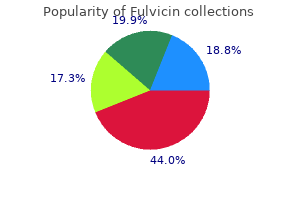
Order 250mg fulvicin overnight deliveryWith using a Bovie electrocautery and a Cobb periosteal elevator antifungal jock itch powder fulvicin 250 mg low price, a subperiosteal dissection is performed via the superficial muscular layer antifungal liquid review purchase fulvicin 250 mg without a prescription. The interme- diate layer fungal rash on neck generic fulvicin 250 mg on-line, consisting of the serratus posterior muscle antifungal soap for ringworm discount fulvicin 250mg fast delivery, is then dissected. The deep layer contains the sacrospinalis, semispinalis, multifidi, and rotator muscle tissue. Furthermore, fluoroscopy or intraoperative radiographs assist determine and verify the correct ranges. The dissection needs to be performed laterally so that the transverse processes are generously exposed. This facilitates the decortication and placement of bone graft later in the process. Decompression Once the posterior parts have been adequately uncovered, a dorsal decompression is performed with removing of the spinous processes and laminae of the concerned levels. An advantage of using the Kerrison rongeur is that the bone may be used for subsequent grafting. However, dangers associated with these devices, including dural tears and damage to neural constructions, ought to be considered. Decortication and Preparation for In-Situ Fusion After enough publicity and decompression have been carried out, the transverse processes and facet joints are prepared for bone grafting. This process may be carried out with the use of a high-speed drill with a chopping bur. The subcutaneous layer is then closed with a 2-0 Vicryl suture and the skin is closed with a 3-0 nylon suture. A 7-mm Jackson-Pratt drain could also be placed overlying the fascial layer, which can cut back the formation of postoperative hematomas and seromas. In-Situ Fusion Once the transverse processes and the facet joints have been prepared, autologous bone graft is packed around the areas of decortication. The graft may be composed of the native bone obtained through the dorsal decompression, but most often consists of autologous iliac bone graft. The iliac wound is closed in a layered fashion, and a drain may be tunneled out of the iliac crest. Closure Once hemostasis has been achieved and the bone graft has been carefully positioned, the paraspinal muscle tissue are returned to midline and the fascial layer is reapproximated with an absorbable suture (0 Vicryl). Placement of bone graft on the transverse processes and aspect If a cerebrospinal fluid leak happens, the dura should be repaired primarily if potential. Postoperative Care Although the articulation with the rib cage supplies some stability to the thoracic spine, an external orthosis. Postoperative radiographs at 1-, 3-, and 6-month time intervals are used to assess any new deformity in addition to a pseudarthrosis. Smoking cessation is beneficial to the patient to improve the success of spinal fusion. The patient can be encouraged to be physically active, although heavy lifting, bending, or twisting should be discouraged until fusion is noticed on radiograph. Conclusion Decompressive thoracic laminectomy and fusion surgical procedure are performed to relieve posterior spinal wire compression from various causes, together with tumor, hematoma, abscess, and traumatic fractures. Generally, native or iliac crest autograft is used for insitu fusion, though other bone graft choices could also be used. In selective instances, instrumentation with screws and rods could be subsequently performed to additional strengthen the spinal column, right spinal deformity, and facilitate spinal fusion. Potential Complications and Precautions Antibiotics could additionally be given preoperatively and postoperatively to reduce the risk of deep infections. Prolonged antibiotic administration or reoperation may be wanted should the wound turn into contaminated. Pseudarthrosis might require reoperation with spinal fusion and instrumentation for pain aid. Care have to be taken during posterior decompression to keep away from violation of the dura or posterior neural elements. Mummaneni Traumatic or pathological fractures of the thoracic spine might compromise spinal alignment and stability, thus inflicting neurologic damage. Pedicle screw�rod instrumentation enables vital utility of forces in multiple planes. Second, pedicle screw fixation avoids placement of instrumentation into the spinal canal.
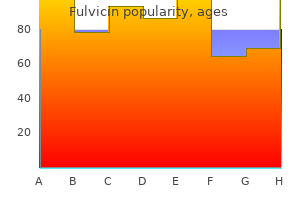
Cheap fulvicin 250mg on-lineThe ordinary strategies of bipolar electrocoagulation antifungal examples order fulvicin on line, topical collagen fiber fungus causes cheap fulvicin 250 mg with visa, thrombin and gelatin foam quinolone antifungal order fulvicin uk, gentle tamponade with cotton pledgets fungus damage order fulvicin amex, and persistence are used for hemostasis. This could need to be done early in the dissection earlier than the clivus is sufficiently visualized. However, the downward force of the retractor against C1 will reorient the arch inferiorly sufficient to impair visualization when the corpectomy and different decompressive procedures are being carried out. To keep away from needless resection of the inferior part of the arch of C1, the retractor may be relocated to the clivus. The suture dimension is 5-0 polydioxanone, which is used for traction suture and dural patch closure. This may also be supplemented with fibrin glue or any commercially available dural sealant. Cryoprecipitate may be utilized topically over the graft, which is then sprayed with thrombin. Criticisms of this method refer to the deep, slender, off-midline entry, which can be overcome by retraction and the surgical microscope. A slender 90-degree angled retractor helps to raise the delicate tissues rostrally initially. The deal with of this retractor is secured to the surgical drapes using elastic bands with a Kocher forceps gripping the sheets via an ether display screen support mounted at the table head. The retractor can also be Intraoperative Craniovertebral Stabilization Spinal stabilization is necessary to consider in preoperative planning as a outcome of all sufferers have stability issues due to both the pathological course of or the decompressive procedures performed. Intraoperative cranial traction is finest achieved with using the halo head ring because conversion to a halo orthosis is anticipated after surgery. However, if the surgeon prefers, standard cranial tongs could be even be used prior to the process. Care must be taken when determining how a lot weight is required because craniovertebral junction stability is often compromised. A rope attached to the traction device is hung over an ether screen assist body and the angle adjusted, as the surgeon requires. In instances the place stability stays a concern postoperatively, traction may be maintained as a temporizing measure after the procedure till the ultimate posterior stabilization is achieved. The option of placing an osseous fusion in situ is probably certainly one of the advantages of this strategy. The C1-C2 lateral plenty can be exposed and are available for interarticular arthrodesis by bone graft insert or transarticular screw. An intact C1 anterior arch can be used as an anchoring site for a notched strut graft to purchase. These options imply that the atlanto-occipital articulation is undamaged, and this must be decided prior to fashioning the fusion assemble. Otherwise the occiput should be included within the arthrodesis, which could be tenuous from this anterior approach for lack of a strong anchoring web site rostrally into the clivus. Note the place of the retractor level that has been inserted into a drill hole inside the clivus. The area surrounded by the dashed traces characterize the anterior arch of C1 and the odontoid and vertebral physique of C2 which are resected during this approach. Primary C1 Arch to C3 Strut Arthrodesis the lateral retropharyngeal strategy permits full resection of the C2/odontoid complicated, including the adjoining ligaments, whereas maintaining the anterior arch of C1. This still leads to in- 12 Retropharyngeal Approach to the Occipital-Cervical Junction, Part 2 eighty one. The caudal finish of the graft is wedged into position over the superior epiphysis of C3 utilizing a 5-mm curved osteotome as a prying lever and a bone mallet to position the graft. An autograft or allograft of iliac bone crest can be utilized as the strut graft between C1 and C2. Because the arch of C1 is usually mobile, it is necessary to dimension the graft with the arch in a neutral place to keep away from under- or oversizing the graft.
Syndromes - Abnormal breathing pattern --breathing out takes more than twice as long as breathing in
- Severe pain or burning in the nose, eyes, ears, lips, or tongue
- Infant appears "floppy"
- Infection of the lungs, urinary tract, and chest
- Itraconazole
- Infection, including sepsis

Fulvicin 250 mg cheapThe surgeon then transitions from a cutting to a diamond bur when cancellous pedicle bone adjustments to cortical and as quickly as the dura has been recognized fungus gnats cactus discount 250 mg fulvicin visa. An attempt is made to protect as much of the pedicle and facet as attainable fungus gnats in drains purchase genuine fulvicin online, however this could not compromise the publicity and the ability of the surgeon to accomplish the goal of full decompression fungus covered chest order fulvicin 250mg line. The disk space is entered superior to the pedicle and inferior to the neurovascular bundle fungus under armpits generic fulvicin 250 mg on line, lateral to the thecal sac. A cavity trough is created where more medial disk abutting the ventral thecal sac could then be delivered into this empty area with down-biting curettes, microforceps, and Woodson instruments16,21. This maneuver helps the surgeon to achieve decompression across the midline, and the thecal sac falls back into anatomic position. If a calcified fragment is identified, then a larger trough is made extending into the vertebral physique for its delivery. If a portion of the fragment is simply too adherent to the dura, it may be left, and, relying on restoration, reimaging could additionally be essential. Minimally Invasive Thoracic Microendoscopic Diskectomy: Lateral Transforaminal Approach this system makes use of tubular muscular dilators/retractors through a posterolateral method together with drilling of the lateral facet advanced with or without resection of the pedicle. It is ideal for centrolateral or lateralized disk herniations causing myelopathy and radicular-type pain syndromes not aware of conservative therapies. Following the affected person being positioned on a radiolucent Wilson body, the fluoroscopy is introduced into the sector in a lateral place. A Kirschner wire (K-wire) is positioned on the medial facet of the caudal transverse course of on the level of the herniation. A 2-cm incision is made ~ four cm lateral to the midline, and a collection of tubular muscle dilators are placed underneath fluoroscopic guidance. Following dilation, a tubular retractor is then affixed to a flexible arm secured to the operative table. An various choice at this step could be to convey within the microscope instead of the endoscope. The muscle overlying the proximal transverse process and lateral aspect advanced is eliminated utilizing an insulated Bovie cautery. Probing with a ball-tip probe helps outline bony margins, and continued use of fluoroscopy all through the process helps orient the surgeon. A high-speed long tapered drill facilitates elimination of the transverse course of, lateral aspect joint, and pedicle. The disk is identified and the epidural veins are coagulated and sectioned, the annulus is minimize with a knife, and the diskectomy is performed. The advantage of the 30-degree endoscope is that it allows in depth disk removing beneath the thoracic spinal twine. Le Roux et al16 carried out a research of 20 patients who offered with symptoms related to thoracic disk herniation (pain and myelopathy most common), and had a transpedicular method to tackle the issue. The authors noted important improvement in all sufferers and no incidence of postoperative instability over a 12-month interval. Other research have reported good neurologic outcomes with the transpedicular strategy, and in chosen instances equivalence with extra invasive anterior and lateral extracavitary approaches. In a systematic review of complication charges from a quantity of approaches in the modern era of thoracic disk surgery (only a couple of circumstances of laminectomy reported), main complication charges ranged from four. The transfacet pedicle-sparing strategy for thoracic disc elimination: cadaveric morphometric evaluation and preliminary scientific experience. Diagnosis and management of thoracic disk herniation and the transpedicular decompression for thoracic disc herniation. Thoracic intervertebral disc protrusion: expertise of 67 circumstances and evaluation of the literature. J Neurosurg 1991;75: 349�355 Conclusion the transpedicular strategy utilizes a posterior and barely lateral trajectory to handle disk pathology. Modifications to this method embrace preserving a few of the pedicle and aspect complex, not performing a complete laminectomy, and newer incorporation of minimally invasive entry methods. Fusion is often not needed as a end result of the stability supplied by the ribs and anterior longitudinal ligament. The transpedicular method is ideal for soft or partially calcified, nonadherent, lateral/centrolateral disk herniations and can be used at any stage in the spine.
Buy 250 mg fulvicin amexEvidence of decompression of neural components in an incomplete damage is mixed antifungal iodine effective fulvicin 250 mg, however developments at present favor surgery in such cases fungus gnat predators uk cheap fulvicin 250mg without prescription. Conservative administration is generally accepted as first-line administration in circumstances with out neurologic harm or gross instability fungus gnats soapy water buy generic fulvicin pills. Original analysis on the topic by Guttman et al20 and Frankel et al17 in the Nineteen Sixties and Seventies demonstrated acceptable neurologic outcomes with immobilization antifungal nose spray purchase 250mg fulvicin mastercard. This entailed 6 to 12 weeks of bed rest and postural discount; 60% of sufferers confirmed neurological improvement, however this population was at excessive threat for systemic problems. For this reason, modern strategies concentrate on bracing to stabilize the affected ranges and on early mobilization. Thus, a big proportion of injuries require surgical decompression and open stabilization. Decompression of neural components varies based on the anatomy of the harm; retropulsion of vertebral physique, neural foraminal compromise causing radiculopathy, epidural hematoma, or foreign objects can every dictate approach. This must be coupled with restoration of sagittal steadiness, and minimizing the length of assemble to maximize section mobility. Risks of elevated perioperative blood loss in hyperacute damage, intraoperative hypotension, as well as delay in remedy of concomitant injuries must be weighed towards the benefits of stabilization and early mobilization after decompression and fusion. There is some evidence of decreased morbidity with interventions performed within seventy two hours of harm. An incomplete neurologic injury generally requires an anterior decompression if anterior components cause neural compression after postural or open reduction. Therefore, a mixed approach is critical 556 V Lumbar and Lumbosacral Spine if an incomplete twine injury is coupled with anterior neural compression. The anterior approach ought to make the most of retroperitoneal access to the vertebral physique to allow vertebrectomy and placement of a cage or strut graft. This approach is limited to the decrease lumbar levels because of the intimate relationship of the belly aorta with the vertebral physique previous to the bifurcation into the iliac arteries. The posterior approach permits lamina decompression along with pedicle screw fixation. Laminectomy is suitable in cases of posterior compression, dural laceration, epidural hematoma, and radicular compression. A measure of anterior decompression may be achieved by way of either retraction of the thecal sac and tamping of the vertebral physique or ligamentotaxis. Pedicle screw fixation has largely changed older fixation methods, together with rod or hook methods. Biomechanical and scientific outcomes studies have proven that pedicle screw fixation allows excessive fusion rates with preservation of top and lordosis and decrease charges of instrumentation failure and pseudarthrosis. Additionally, these procedures usually entail increased operative blood loss and increased incidence of gastrointestinal and pulmonary problems. These strategies lay the muse for the minimally invasive lateral approaches that make the most of muscle splitting instead of open dissection. Minimally invasive and computer-assisted techniques are another advancement in the therapy of traumatic fractures. Minimizing blood loss and sparing of the paraspinal musculature might expedite useful recovery in posterior percutaneous segmental pedicle screw fixation. Anterior endoscopic methods could decrease approach-related morbidity, but they entail a steep studying curve and require experience with the diaphragm and accompanying regional anatomy at the thoracolumbar junction. For surgical therapy of isolated burst fractures, anterior and posterior approaches could have similar outcomes regarding kyphosis, pain, and function, although some studies have shown that posterior approaches entailed a better incidence of antagonistic events. Some surgeons might advocate quick fusion constructs spanning only two disk spaces in younger sufferers with high fusion potential, or in lumbar fractures with anterior column integrity. Longer constructs (two above and two below) may be acceptable for sufferers with poor bone quality or low fusion potential, or in thoracic fractures and anterior column failure. This patient inhabitants is at great threat for adverse events within the acute setting, including urinary tract infections, neuropathic ache, pneumonia, delirium, and ileus. Early removal of indwelling urinary catheters in favor of fresh intermittent catheterization must be carried out. Minimizing narcotic pain drugs and the usage of adjuvant ache medication could stop delirium and ileus.
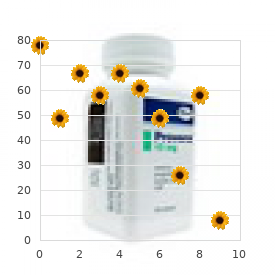
Order fulvicin with mastercardThese collections can develop within weeks of surgery fungus gnats root rot purchase fulvicin online now, especially if dural entry occurred in the course of the electrode placement fungus on fingernail cheap fulvicin 250mg on-line. Mechanical Device Complications Migration of the electrode fungus gnats solution purchase fulvicin without prescription, lead fracture or disconnection antifungal group cheap 250 mg fulvicin amex, and lack of recharging capabilities can occur. Spinal wire stimulation versus reoperation for failed back surgical procedure syndrome: a price effectiveness and cost utility evaluation based mostly on a randomized, controlled trial. The costeffectiveness of spinal twine stimulation within the treatment of failed back surgery syndrome. The cost-effectiveness of spinal cord stimulation for complex regional pain syndrome. The applicable use of neurostimulation: avoidance and therapy of issues of neurostimulation therapies for the remedy of continual ache. Effectiveness of cervical spinal twine stimulation for the management of continual pain. Neuromodulation of evoked muscle potentials induced by epidural spinal-cord stimulation in paralyzed individuals. Long-term follow-up of spinal wire stimulation to restore cough in topics with spinal cord injury. Use of cervical spinal wire stimulation in remedy and prevention of arterial vasospasm after aneurysmal subarachnoid hemorrhage. The appropriate use of neurostimulation: new and evolving neurostimulation therapies and relevant treatment for persistent pain and selected disease states. Complications of spinal wire stimulation, suggestions to improve consequence, and financial impression. Incidence and avoidance of neurologic issues with paddle kind spinal twine stimulation leads. Paddle versus cylindrical leads for percutaneous implantation in spinal twine stimulation for failed again surgical procedure syndrome: a single-center trial. The use of intraoperative electrophysiology for the placement of spinal twine stimulator paddle leads underneath general anesthesia. Furthermore, continuous infusion eliminates a few of the fluctuation that occurs with an oral treatment schedule. Improvements in pump expertise that allow pa tients to self-administer boluses of treatment might get rid of the need for patients to take supplemental oral drugs. Numerous circumstances manifesting with spasticity of both spinal and cerebral origin (Table 117. Patients ought to have first been tried on more conservative choices, which failed, and will reveal a clear capability to adhere to treatment regimens. In practice, however, a large number of chronic ache patients obtain intrathecal drug delivery remedy using a wide range of medications, typically in com pounded mixtures. The most typical use involves combining morphine with bupivacaine, although mixtures including hydromorphone or fentanyl with the possible addition of cloni dine are additionally attainable. Pain Cancer Pain More than half of the patients with ache due to malignancy may be undertreated. In sufferers whose ache medicines have been titrated to the limit, intrathecal administration can provide a decreased side-effect profile and steady supply. In the case of spasticity, Modified Ashworth Scale scores are assessed at baseline and then at a number of time points after administration of a single 50-�g intrathecal dose of baclofen. A optimistic correlation between response to a trial dose and longterm ache aid has been demonstrated in patients with postlaminectomy ache syndrome. Decreased spasticity can scale back the event of contractures and joint deformities. Reduction in muscle spasms ends in decreased muscle pain and fatigue, extra constant sleep patterns, and improvements in the ease of nursing case. The reservoir of the pump should be refilled at routine intervals to guarantee continued effective remedy. Further extra, a dry pump might result in a stalled rotor throughout the pump, leading to mechanical malfunction. Two categories of pumps are available: fixed-flow fee and vari able programmable rate. This is usually accom plished by withdrawing the present medication from the pump reservoir and refilling it with a more concentrated formulation.
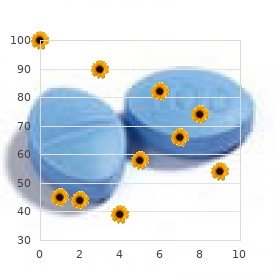
Discount fulvicin 250mg with visaDuring weeks three to four fungus armpit generic fulvicin 250 mg visa, the neuroectoderm undergoes thickening antifungal ergosterol buy fulvicin with mastercard, narrowing antifungal cream for toenails discount 250mg fulvicin fast delivery, and elongation with the assist of microtubules regulated by the mesoderm antifungal liquid soap discount 250 mg fulvicin mastercard. Development of the neural tube happens in four phases: formation, shaping, bending, and fusion. The formation and shaping of the neural tube includes multiple intrinsic forces of actin-like filaments. Fusion entails many molecular cell�cell interactions on the dorsal portion of the neural folds with the formation of intercellular junctions and floor glycoproteins. As the neural tube closes, it enters a phase of disjunction that entails separation of the cutaneous ectoderm from the once continuous neuroectoderm. Neural crest cells initially located at the neural folds migrate to form the dorsal root ganglion. Paraxial mesoderm differentiates into its respective tissue depending on the adjacent neuroectoderm. The first portion of the neural tube to shut is the cranial spinal wire at the sixth cervical somite. The paraxial mesoderm ventral to the neuroectoderm differentiates into the meningeal layers and travels circumferentially to cover the neural tube. Secondary neurulation begins with the condensation of a cluster of pluripotent primitive stem cells referred to as the "caudal cells" or "tail-bud cells," which form the medullary wire through a means of canalization. The caudal portion of the neural tube turns into smaller and thinner in diameter, forming the conus and filum terminale. As elongation of the neural plate happens, stretching of the overlying cutaneous ectoderm aids in bringing the neural folds collectively. The neural groove folds deepen and start formation of a cleft aided by actin-like contractile filaments within L cells positioned within the lateral portions of the neural folds. The wedge-shaped M cells on the median hinge point specify the dorsal direction of cleft formation. Fusion entails many molecular cell�cell interactions at the dorsal portion of the neural folds. Glycosaminoglycan molecules seem to be lively in the recognition course of between the approaching lips of the neural folds. Segregation of neurons inside the primitive neural tube into the dorsal alar plate and the ventral basal plate are separated by the sulcus limitans. The flat dorsal placode is considered the internal lining of the wire if the neural tube has completely shaped. The ventral placode incorporates the medial ventral nerve roots and the lateral sensory dorsal nerve roots. The junctional zone is the area between the arachnoid membrane of the neural placode and the cutaneous ectoderm. The arachnoid membranes nonetheless join the cutaneous ectoderm to the neural placode. Dura is also present within the ventral portion of the neural sac however fuses with the underlying fascia, muscle, and failed lamina of the periosteum. Dura is formed from dorsally situated cells from the meninx primitiva, which travels circumferentially. The neural crest cells migrate ventrally to kind the dorsal root ganglia and the dorsal nerve root. The leptomeninges stretch between the lateral margins of the neural placode to the sides of the abnormal pores and skin. The lateral edges of the dura attaches to skin, lumbodorsal fascia, dorsal paraspinous muscle tissue, and periosteum. In circumstances of a large defect or suspected issue in pores and skin closure, a big myocutaneous flap may be wanted. There may be a number of folds within the dorsal membrane that have to be sterilized, as cautious preparation will minimize recontamination with dissection. A naked hugger or heat blankets ought to be placed beneath the infant to maintain regular physique temperature.
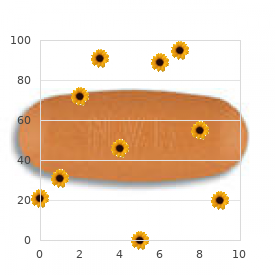
Discount fulvicin master cardDepending on the cranial/caudal location mold fungus definition cheap fulvicin online american express, extra of the superior lamina or inferior lamina is taken off to entry the herniated components anti yeast ultraceuticals generic fulvicin 250 mg with mastercard. The rostral extent of the hemilaminectomy required varies from one spinal level to another definition of fungus spore best order fulvicin. However antifungal emulsion buy 250mg fulvicin mastercard, as one progresses cephalad, the disk space turns into extra cephalad in relation to the interlaminar space and, subsequently, publicity requires proportionally extra bone removal. Some bone from the medial facet of the aspect or the pars interarticularis may need to be removed to obtain enough lateral publicity of the underlying disk. This is particularly essential with giant disk herniations to mobilize and retract the nerve root without undue strain. However, it is essential to watch the amount of pars remaining to keep away from an iatrogenic or delayed pars fracture and subsequent spondylolysis. This could be achieved with the operating microscope or utilizing surgical loupes and a headlight. Although the ligamentum flavum may be incised longitudinally at the L5-S1 degree, the sharp curette is usually used to separate out the insertion of the ligament and bone. Keeping the strain of the curette against the bone decreases the chance of a durotomy. It is now possible to insert a small cottonoid or pledget of Gelfoam into the epidural space to displace the thecal sac and protect the dura. Additional ligament can then be eliminated laterally using Kerrison rongeurs to get lateral to the nerve root. It ought to be remembered that the ligamentum constitutes a portion of the medial wall of the facet joint capsule, and due to this fact because the ligamentum is removed, caution should be exercised not to open the facet capsule. Removal of solely the needed ligament for decompression and entry is really helpful, as placement of the footplate of the Kerrison has been identified to produce dural tears exterior the extent of the bony opening. Once the ligamentum flavum has been eliminated, the epidural area is explored with the purpose of figuring out the nerve root. The root is normally seen as a white tubular construction with minute vasculature seen on the surface. The nerve root may be displaced both laterally or medially by disk herniations, Positioning the lumbar microdiskectomy is typically performed with the affected person susceptible and supported by a normal spinal frame. Frames that reduce the lumbar lordosis, such as the Wilson body, will open up the interlaminar house and facilitate access. With any prone spinal place, one should be cautious about eye stress and the uncommon incidence of blindness, which can be catastrophic. Along with standard sterile prep of the lumbar spine, localization of the spinal level for placement of the incision is carried out sometimes with C-arm fluoroscopy or intraoperative X-rays. The lateral view of the spine with counting of the spine from the sacrum is beneficial to mark the proper stage, which highlights the importance of preoperative plain films to examine with for stage localization. You have to concentrate on congenital findings such as lumbarization of the sacrum or sacralization of the lumbar spine, in addition to anomalous ribs which will lead to misinterpreting the right spinal level. The epidural fats overlying the thecal sac and nerve root could be gently separated and teased out of the way using a Penfield dissector. Epidural veins ought to be individually coagulated with bipolar cautery on a low setting and sharply divided with microscissors. Using a blunt dissector, the lateral gutter of the spinal canal is palpated as far cephalad as potential. By beginning cephalad, one can keep away from inadvertent entry into the axilla of a laterally displaced and stretched nerve root. The nerve root is then gently retracted medially and is maintained on this position utilizing a nerve root retractor. If no free fragments are seen, the posterior longitudinal ligament and annulus are then incised in a cruciate fashion and the interspace is entered. Additional disk material could additionally be freed up by scraping the vertebral finish plates with quite a lot of curettes. At this level, the spinal canal is explored, on the lookout for any extra free fragments of disk material. Exploration can be carried out in the neural foramen above and beneath the nerve root. This have to be done with extreme vigilance in order not to push an occult fragment of disk materials further out into the foramen. The use of epidural narcotics or steroids at this point has been reported, and must be tailor-made to the medical needs of the patient.
|



